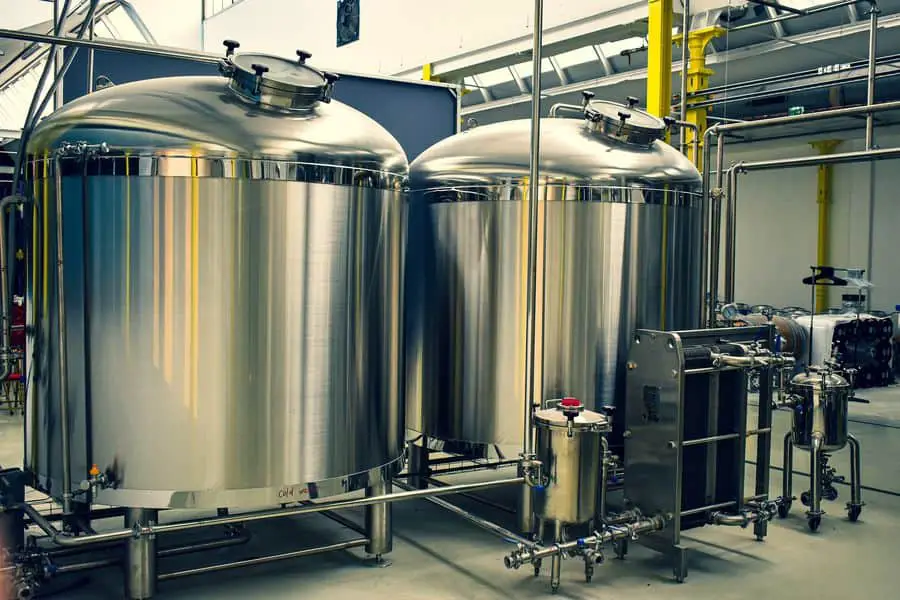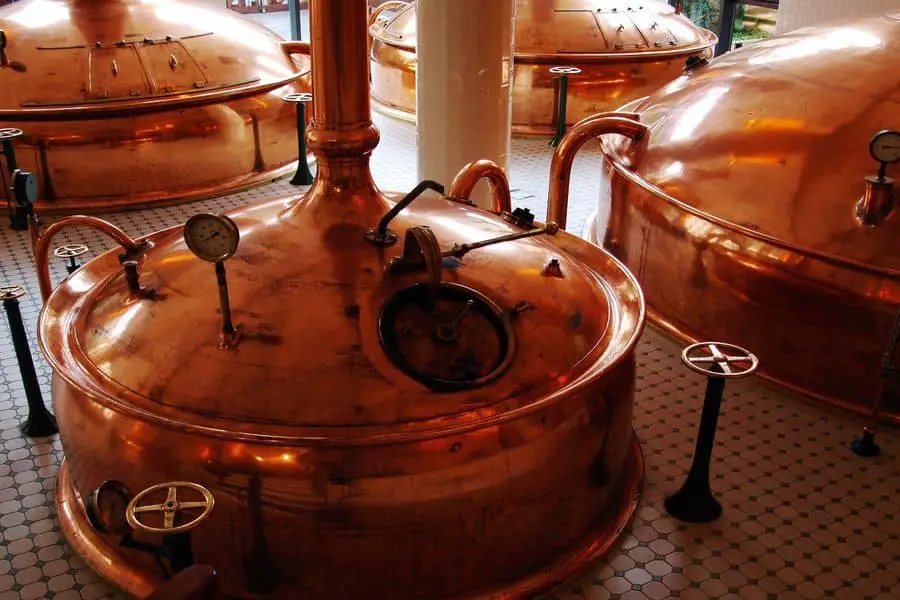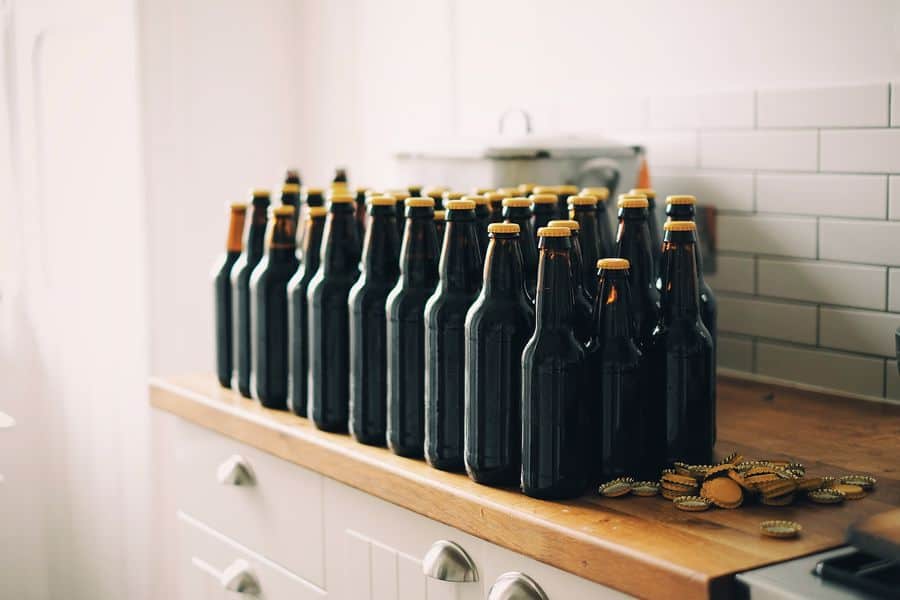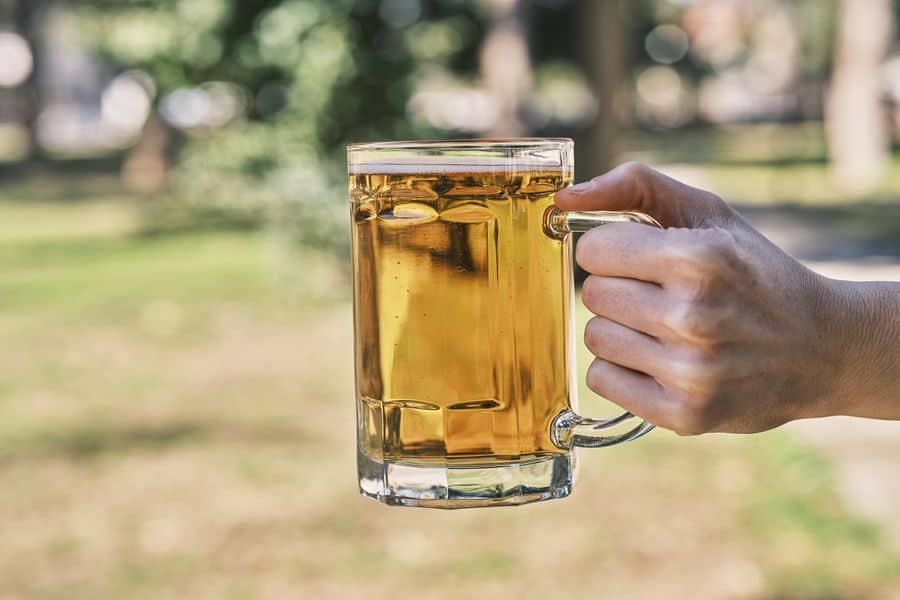If you buy something through a link in our posts, we may get a small share of the sale.
Fermentation is the backbone of the brewing process and is used to convert sugar into alcohol and sometimes carbon dioxide. Having the correct fermentation in your arsenal is key to having a great finished product. Primary vs. secondary fermentation, which one is better?
Contents
Primary vs Secondary Fermentation General Overview
Primary fermentation is the first step in the brewing process, where the wort is turned into beer. It occurs during the first three to seven days. The yeast is added to the wort, eating the sugar and turning it into alcohol. The secondary process of fermentation is the second step in the brewing process and takes one to two weeks as yeast slowly eats maltose and turns it into alcohol and carbon dioxide.

The two fermentation processes are essential, and getting the right one for the beer you are making is key. If you are brewing a light beer, then the primary process is the best option. For beers with many flavors, such as stouts or IPAs, the secondary one is the better option to allow for more flavor development.
Primary Fermentation Overview
This fermentation occurs when the yeast is added to the wort, and the sugar is converted to ethanol and carbon dioxide. The yeast will eat all of the sugar quickly, usually within a few days. The carbon dioxide will escape from the wort and cause the beer to bubble.
The yeast used here is saccharomyces cerevisiae, which is a top-fermenting yeast. This means that the yeast will rise to the top of the wort and form a foam called krausen. Krausen is made up of yeast, proteins, and lipids from the wort, and it indicates the end of primary fermentation.
This process of fermentation will last for two to three weeks, depending on the temperature of the room and the yeast strain. In the end, the yeast will have eaten all of the sugar and will be dying off.
Factors That Affect Primary Fermentation
- Temperature: The room’s temperature will affect how quickly the yeast eats the sugar. The warmer the room, the faster the yeast will work.
- Yeast Strain: Different yeast strains will work at different speeds.
- Sugar: The more sugar that is in the wort, the faster the yeast will eat it. This is why high-alcohol beers are typically made with a lot of sugar.
Secondary Fermentation Overview
Also referred to as conditioning, secondary fermentation is a process that happens after the primary fermentation stage. At this stage, the beer will have most of the yeast and solids produced during the primary process removed. This is often done through a process called fining, which uses a substance like gelatin or isinglass to remove these particles.
The beer will then be transferred to a new container, where it will undergo a secondary process. Here, the beer will develop its final flavor and carbonation. The length of time that the beer undergoes a secondary process of fermentation will depend on the type of beer being made. Others like Ale take a shorter time while others larger take longer.

A few different things can happen during this fermentation process that should not be taken lightly.
- Flavors may change: The beer might take on new flavors or mellow out the flavors that were present during primary fermentation.
- Carbonation may increase: This fermentation process can cause CO2 to dissolve more quickly, leading to a higher level of carbonation in the beer.
- Head retention might improve: Bubbles that form during this fermentation can cling to proteins present in the beer, leading to better head retention.
- Yeast might die: If the yeast is not healthy, it might not make it through secondary fermentation. This could lead to off-flavors in the beer.
- Sediment may form: A layer of sediment may form at the bottom of the container during this fermentation process. This is not always a bad thing, as it can often lead to a better-quality beer.
Factors Affecting Secondary Fermentation
The length of time that the beer undergoes this process will depend on a few different factors, including:
- Type of yeast used: Different yeast strains will have different fermentation times.
- Type of beer: Some types of beers, like Ales, undergo this fermentation for a shorter time than other types of beers, like Lagers.
- Condition of the yeast: If the yeast is in good condition, it will ferment more quickly.
- Temperature: The higher the temperature, the more quickly the beer will ferment. This process is often done at a higher temperature than the primary one.
- Ingredients: The type and amount of ingredients in the beer can also affect the length of time that the beer undergoes secondary fermentation.
Comparing Primary and Secondary Fermentation
Brewing beer is a complex process involving fermentation that results in different types of beer, and can take an average of eight weeks to be completed.. While different factors affect the fermentation such as the type of beer, its ingredients, and the yeast strain, there are certain similarities and differences between primary and secondary fermentation.

Similarities
- Both happen after the wort has been boiled.
- Both involve the conversion of sugars into alcohol and CO2.
- Yeast is the main catalyst for both processes.
- Both are affected by the temperature of the beer.
- The final product of both processes is beer.
- Both processes can lead to the development of off-flavors if not done properly.
- The quality of the beer can be improved with both processes.
- Sediment can form in both processes.
- Flavors can change in both processes.
- Carbonation can increase in both processes.
Differences
- The primary fermentation takes place in a sealed container, while secondary fermentation takes place in a new container that has been sanitized to kill any bacteria.
- The time frame for primary fermentation is generally shorter than for secondary fermentation. The primary takes about three to seven days, while the second one can take up to two weeks or more.
- The final product of the secondary is often a better-quality beer than the final product of the primary one. This is because the secondary process allows for the removal of off-flavors and the improvement of head retention.
- The ingredients in the beer can affect the length of time that the beer undergoes a secondary process. This has to do with the fact that different ingredients provide different types of sugars for the yeast to ferment.
- A layer of sediment may form at the bottom of the container during the secondary process. This is not the case in the primary one.
- Head retention might improve during the secondary process as a result of bubbles clinging to proteins present in the beer and forming a stable foam.
- The yeast used in the primary process of fermentation is often different from the yeast used in the secondary. The secondary yeast should be a strain that is tolerant to high alcohol levels and will not produce off-flavors, unlike the primary yeast.
- The yeast will consume more sugar during the secondary process, resulting in higher alcohol content in the beer compared to the primary.
- The beer conditioning occurs only in secondary fermentation, while in primary, the yeast is just starting to grow to its final form and the carbonation is low.
Major Distinguishing Factor
The distinguishing factor between primary and secondary processes is the time frame: the primary process is shorter, while secondary fermentation takes longer. The type of yeast, the temperature, and the ingredients all play a role in how long the beer undergoes secondary fermentation.

Another distinguishing factor is that the final product of secondary fermentation is often a better-quality beer than the final product of the primary one. This is because the secondary process of fermentation allows for the removal of off-flavors and the improvement of head retention.
When to Use Primary Fermentation
Primary fermentation should be used when the beer is being made for the first time, when a new yeast strain is being used, or when the temperature is too high for secondary fermentation.
You can also use primary fermentation to have your beer ready sooner. This is because it takes about three to seven days for the primary process of fermentation to be completed, while the secondary one can take up to two weeks or more.
When to Use Secondary Fermentation
The secondary process of fermentation should be used when the beer has been made before, and you want to improve the flavor or head retention, when the fermentation temperature is too low for primary fermentation, or when you want to bottle condition the beer.
So, Which Fermentation Is Better?
Ultimately, the secondary one produces a better-quality beer than the primary. This is because the secondary process allows for the removal of off-flavors and the improvement of head retention. However, if you are looking for a quicker, less complicated brewing process, primary fermentation is a good option.
Conclusion
Both the fermentation processes are essential in beer making and give a different type of beer. In general, the fermentation process will depend on the type of beer, its ingredients, and the yeast strain.

